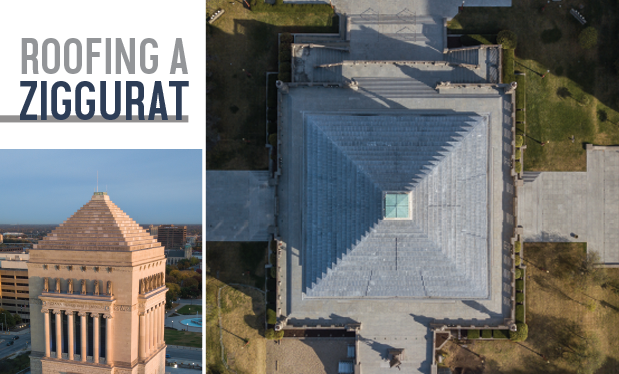Roofing workers take more risks when using robust safety gear
Researchers have found roofing workers with more safety gear in place are more likely to engage in riskier behaviors, making the workers less safe overall, according to popularmechanics.com.
Civil engineering researchers at Virginia Tech, Blacksburg, and Clemson University, Clemson, S.C., suspected roofing workers are experiencing a false sense of security while working with robust safety gear. Their study, which appears in the Journal of Construction Engineering and Management, explains it as a documented psychological phenomenon known as risk compensation.
For example, roofing workers may become overly comfortable with safety interventions such as perimeter barriers, leading workers to step closer to a roof’s edge than they otherwise typically would.
To test their hypothesis, the researchers set up a first-of-its-kind experiment involving virtual reality headsets. They gathered a group of students with some construction work experience and trained the students about the basics of installing roof shingles.
The researchers placed the student volunteers—who were acting as unskilled roofing workers—in a virtual environment to simulate roofing work. Then, they assigned the students into one of three randomly ordered levels of safety equipment: only personal protective equipment (hard hat, gloves and knee pads) but no fall protection; PPE and a fall-arrest system; and PPE, a fall-arrest system and a perimeter guardrail.
At the higher levels of safety, researchers found “more safety interventions (i.e., higher levels of fall protection) produced a sense of invulnerability among participants. This false sense of security ultimately increased their risk-taking behavior by up to 55%: participants stepped closer to the roof edge, leaned over the edge and spent more time exposing themselves to fall risk.”
Risk compensation is a cognitive bias—or systematic error in thinking—that affects everyone and can occur during daily activities. For example, drivers with blind-spot detectors built into their car mirrors may be less prone to checking those spots.
The roofing experiment suggests this cognitive bias may occur in construction. The researchers concluded a new kind of training or monitoring system is necessary to ensure workers are not relying on cognitive biases and jeopardizing their safety.
Which digital construction trends have emerged in 2021?
During the past decade, the construction industry increasingly has adopted new technologies and increased digitization, according to constructionequipmentguide.com. The COVID-19 pandemic accelerated the pace of change in 2020 as more people worked remotely, demand for remote collaboration tools grew and migration to cloud-based programs continued.
During a recent webinar, Ten Construction and Engineering Technology Trends to Watch in 2021, leaders from global software companies Egnyte, Mountain View, Calif., and Bluebeam, Pasadena, Calif., addressed some of the major innovations, trends and technology-related challenges facing the architecture, engineering and construction industries.
The speakers highlighted the following information:
- Advances in cloud computing have enabled companies to leverage large amounts of data generated on projects in new ways.
- Remote collaboration has been essential to keeping industries running. Companies that were slow to adopt technology have been forced to keep up with changes and can see the effectiveness of being able to collaborate remotely.
- Data compatibility and interoperability among technology platforms and software programs pose a significant challenge. Industries are struggling with how to store massive amounts of data generated by a project in a common data format that easily can be accessed during a project’s life cycle.
- Data security requires ongoing education for businesses. There is a common misconception that ransomware or cyberattacks are restricted to government entities or high-profile companies, but other industries such as the construction industry also are at risk.
- More applications in design and modeling technologies are generating massive quantities of data, and how the data is obtained and managed is important.
- Increased automation offers the benefits of productivity growth on a job site, which may help offset the construction industry’s skilled labor shortage.



